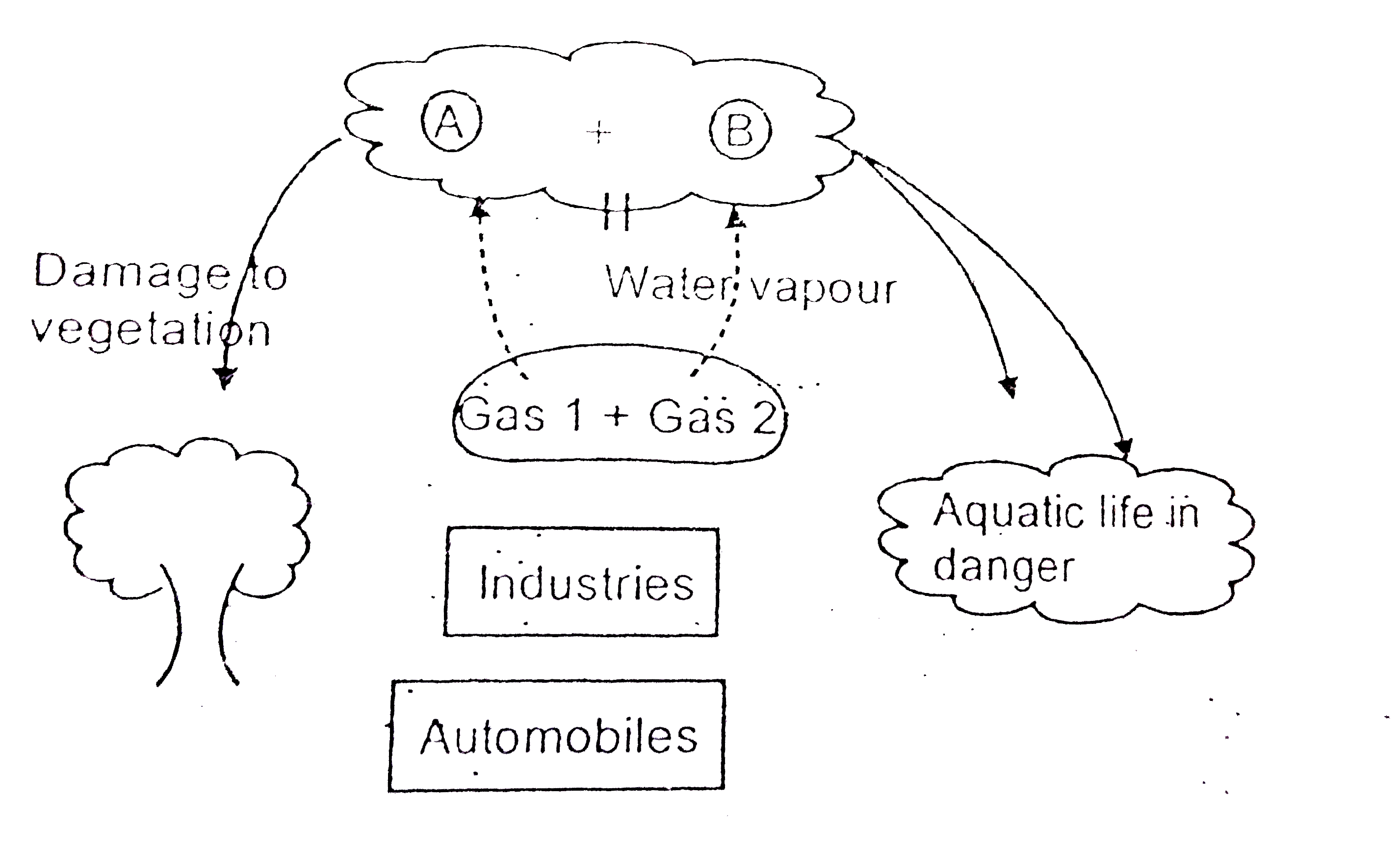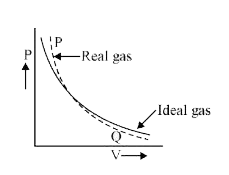One gas bleaches the colour of flowers by reduction and another gas by oxidation. The gases respectively are
SO2andCl2
COandCl2
NH3andSO2
H2SandBr2
The correct Answer is:A
To solve the question regarding the gases that bleach the color of flowers by reduction and oxidation, we can analyze the properties and reactions of the given gases.
1. Understanding the Question:
- We need to identify two gases: one that bleaches color by reduction and another that does so by oxidation.
2. Identifying Gases:
- The options provided are:
- SO₂ and Cl₂
- CO and Cl₂
- H₂S and Cl₂
3. Analyzing SO₂ (Sulfur Dioxide):
- SO₂ is known to act as a reducing agent.
- When SO₂ interacts with colored substances, it can donate electrons, leading to a reduction reaction that removes color.
- For example, SO₂ can react with colored organic compounds, reducing them and thus causing a loss of color.
4. Analyzing Cl₂ (Chlorine):
- Cl₂ is known to act as an oxidizing agent.
- When Cl₂ reacts with water, it produces nascent oxygen (O), which is a highly reactive form of oxygen.
- This nascent oxygen can oxidize colored substances, leading to a bleaching effect.
- The reaction can be summarized as:
Cl2+H2O→HCl+O
- The nascent oxygen then reacts with the colored compounds, leading to their decolorization.
5. Conclusion:
- The gas that bleaches color by reduction is SO₂ (sulfur dioxide).
- The gas that bleaches color by oxidation is Cl₂ (chlorine).
- Therefore, the gases respectively are SO₂ and Cl₂.
Final Answer:
The gases respectively are SO₂ (sulfur dioxide) and Cl₂ (chlorine).
- We need to identify two gases: one that bleaches color by reduction and another that does so by oxidation.
- The options provided are:
- SO₂ and Cl₂
- CO and Cl₂
- H₂S and Cl₂
- SO₂ is known to act as a reducing agent.
- When SO₂ interacts with colored substances, it can donate electrons, leading to a reduction reaction that removes color.
- For example, SO₂ can react with colored organic compounds, reducing them and thus causing a loss of color.
- Cl₂ is known to act as an oxidizing agent.
- When Cl₂ reacts with water, it produces nascent oxygen (O), which is a highly reactive form of oxygen.
- This nascent oxygen can oxidize colored substances, leading to a bleaching effect.
- The reaction can be summarized as:
Cl2+H2O→HCl+O
- The nascent oxygen then reacts with the colored compounds, leading to their decolorization.
- The gas that bleaches color by reduction is SO₂ (sulfur dioxide).
- The gas that bleaches color by oxidation is Cl₂ (chlorine).
- Therefore, the gases respectively are SO₂ and Cl₂.
The gases respectively are SO₂ (sulfur dioxide) and Cl₂ (chlorine).
Similar Questions
One gas bleaches the colour of flowers by reduction and other by oxidation. These gases are
View SolutionOne gas bleaches the colour of flowers by reduction while the other by oxidation :
View SolutionOne gas bleaches the colour of flowers by reduction, while the other by oxidation, the two gases respectively are:
View SolutionOne gas bleaches the colour of flowers by reduction, while the other by oxidation, the two gases respectively are:
View Solution
Gas 1, Gas 2, A and B respectively are
View SolutionOne greenhouse gas contributes 14% to total global warming and another contributes 6%. These are respectively indentified as:
View SolutionBrown gas formed by oxidation of NO.
View SolutionTwo gases X and Y bring about bleaching of flowers. X bleaches due to oxidation of dye while Y bleaches by reducing the colouring matter. X and Y are respectively
View SolutionWhat are ideal and real gases? What is the cause of deviation of real gases from the ideal gas behaviour ?
View SolutionAt point P and Q, the real gas deviation with respect to ideal gas is respectively :

View Solution